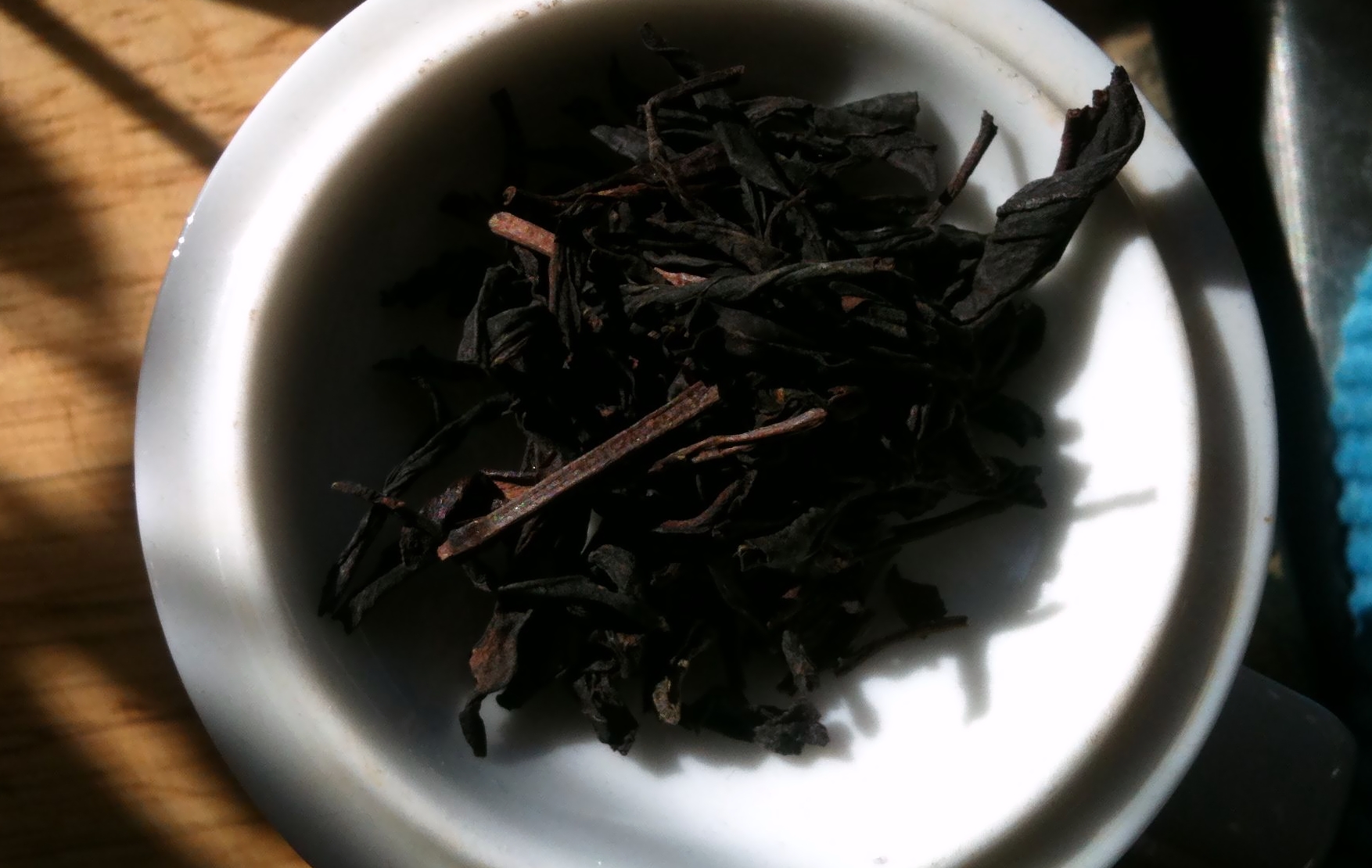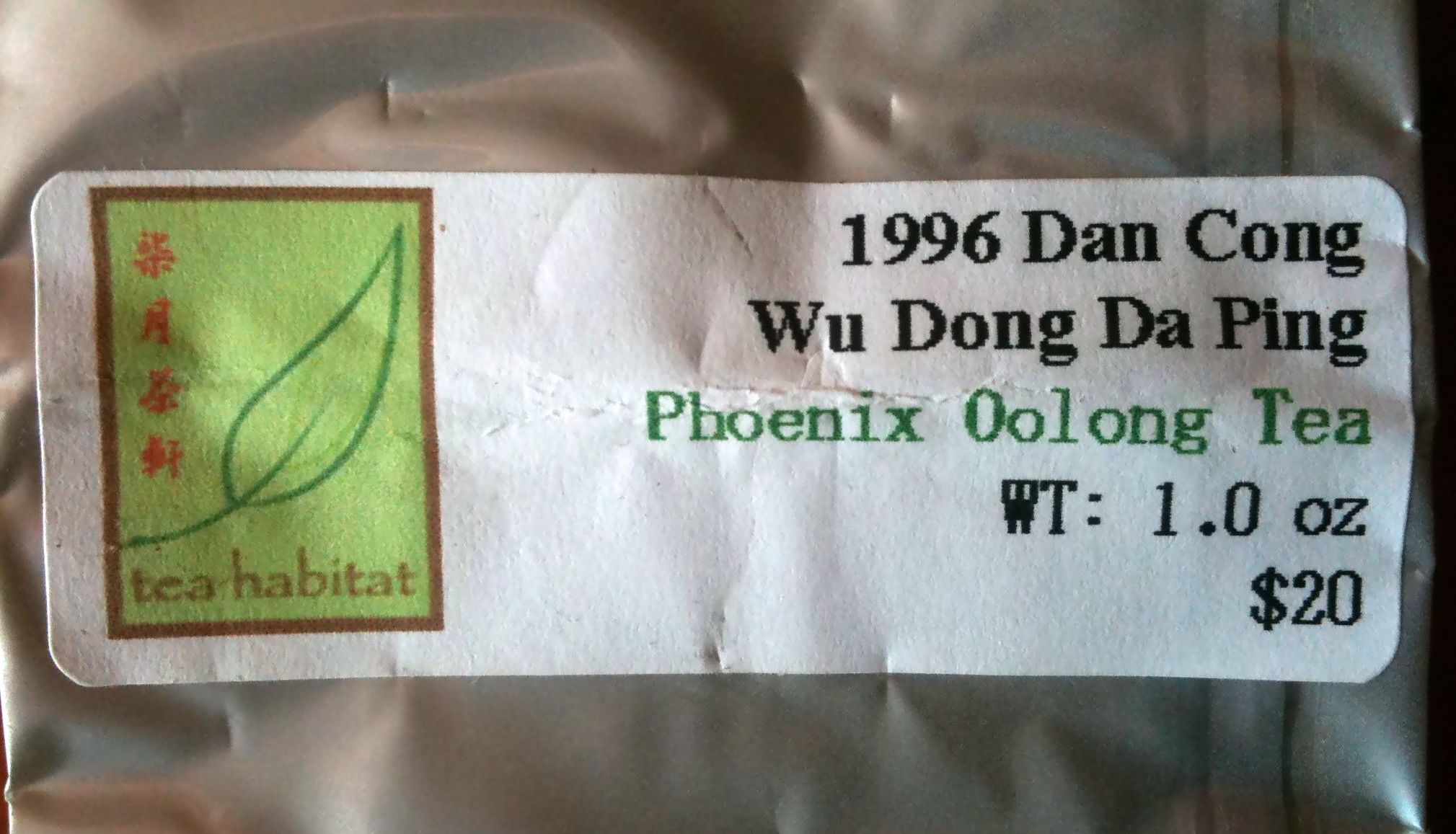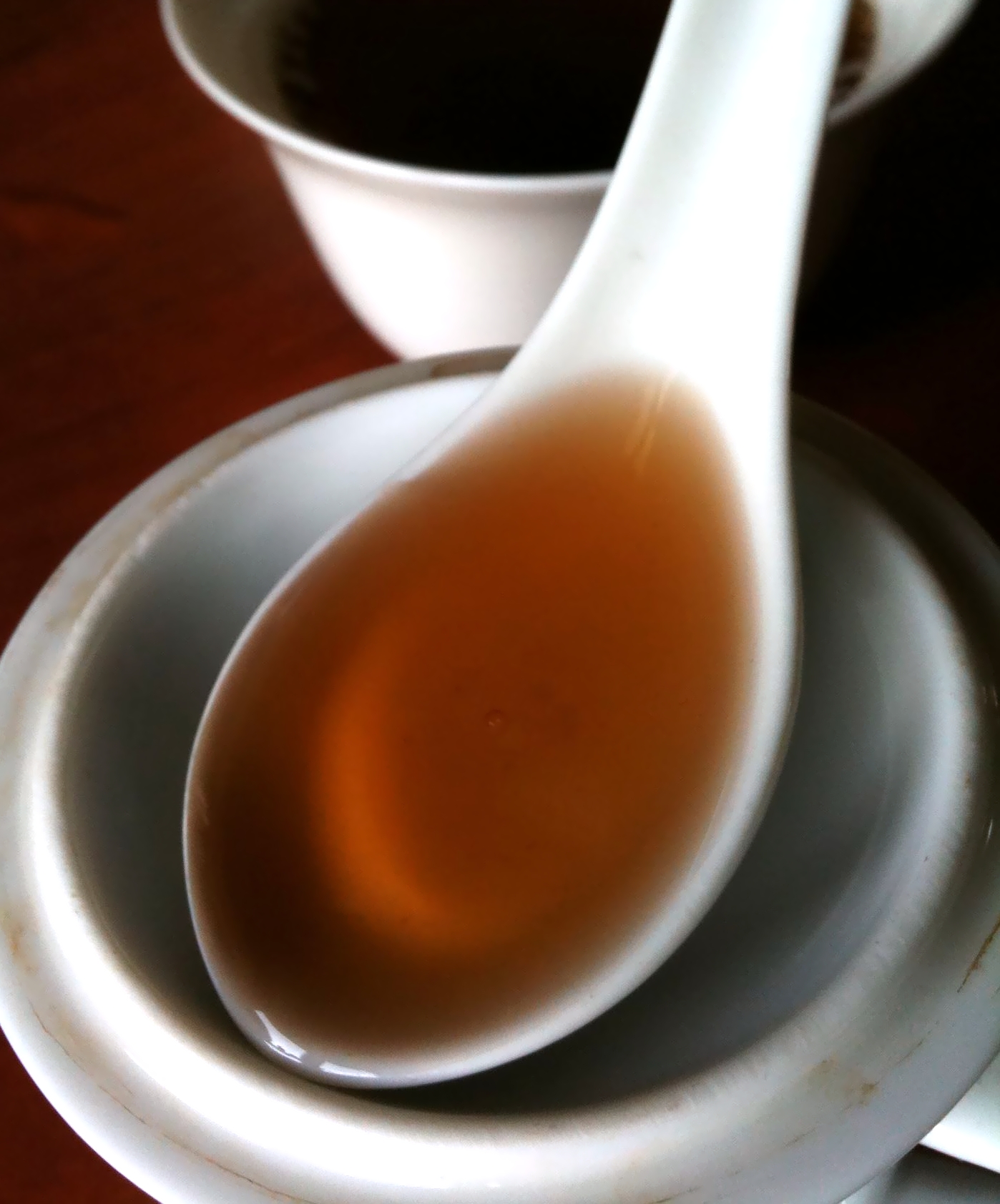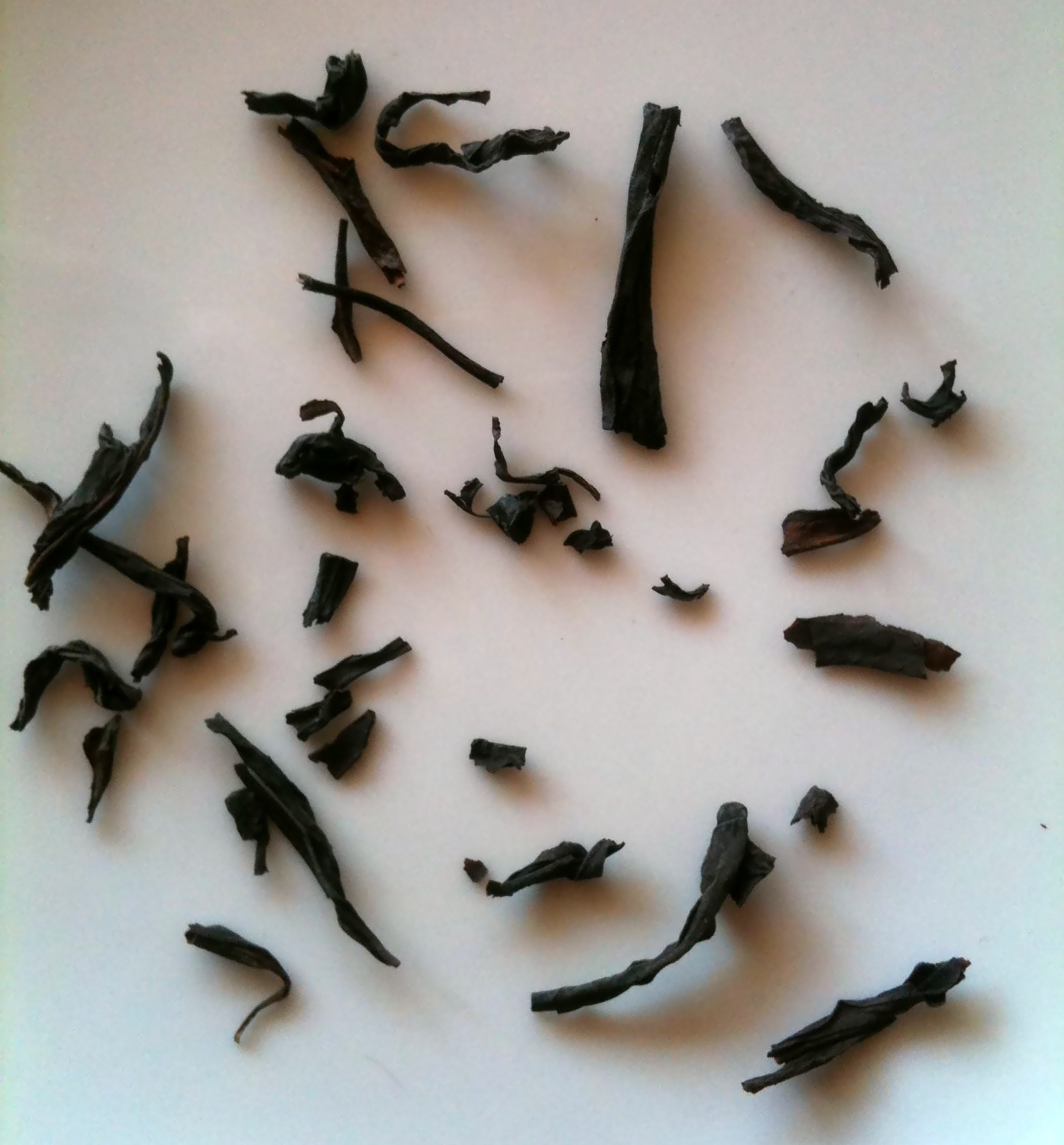Dancong 1994–1997
Posted on 19 October 2011
Do you know Dancong? This Chinese tea (‘Phoenix oolong’) is one of the world’s most distinctive. Its bouquet is comparable to nothing else: so headily exotic, flowery and spicy that it’s hard to believe it comes from dried leaves. It’s the Gewürztraminer of tea.
Or the Riesling, actually. Dancong is extremely sensitive to plantation sites, developing an amazing variety of natural clones and subvarieties of the tea tree. There are so many types – poetically identified by the aroma, ranging from the delicious Honey Orchid to the funky Big Leech – that it’s difficult to explore them in a lifetime.
One persone who tries nonetheless is Imen, owner of the Tea Habitat web shop and blog in California. At any time she will stock more then twenty varieties of Dancong including some very limited old tree versions that make the glory of this tea appellation. Imen also has a number of aged Dancongs. Now old tea other than puer is notoriously difficult to source in the West, and it’s great to have them here from a reputed vendor.
I’ve put three older Dancongs in one of my orders with Tea Obsession. Now you might ask what the interest of ageing DC is, given this tea’s major quality being the exuberant aroma that is, naturally, an attribute of youth. But just as Riesling, Dancong has a strong underlying structure and aged more than well, complexifying rather than losing it’s bouquet.
It’s certainly the case of the 1996 Wudong Daping, an impressively powerful tea with plenty of tannic reserve (careful about the brewing times here!). It’s a fairly roasted tea In style (perhaps recently reroasted) but also Has attractive spicy orange aromas, typical of Dancong. The bitterness is very present but pleasantly clean. At $20/oz it isn’t very cheap but for the age and quality I think it’s more than reasonable.
The 1997 Milan (Honey Orchid) is a different animal. Brewing a dark ruby colour that’s fairly similar to Burgundy wine, it is actually very vinous. Once infused and poured into the cup, it definitely smells like a red wine: of plums, cherries, blackcurrants, even some red flowers. The roast level is similar to the 1996 but the aromatic profile is very different. It’s a pleasant tea to rebrew several times, with the vinous, stewed red-fruit charakter slowly effacing but always distinctive.
The 1994 Dancong is the weakest link of this trio. With a faint aroma to the leaves and in the cup, it lacks much intensity and comes across as somewhat chunky and square-cut, without the clean invigorating aromaticity of good Dancong. It’s got power left (easy to overbrew) but little fruit. Still it’s warming and substantial and at $12/oz it offers a good (if forgettable) occasion to taste an aged oolong.
Disclosure
Source of teas: 1996, 1997 – own purchases, 1994 – bonus pack received from the vendor on a large purchase.





